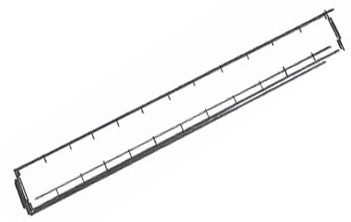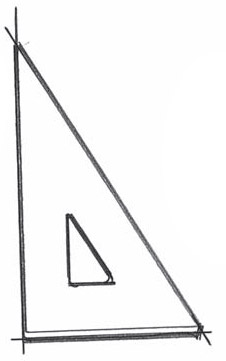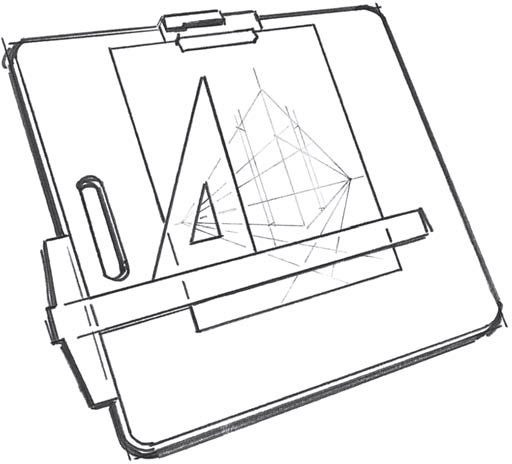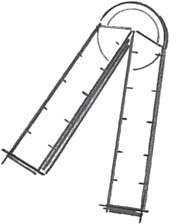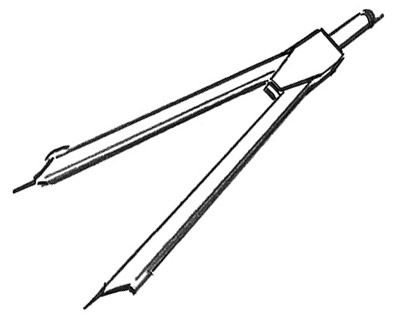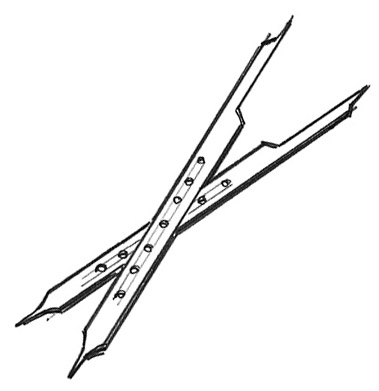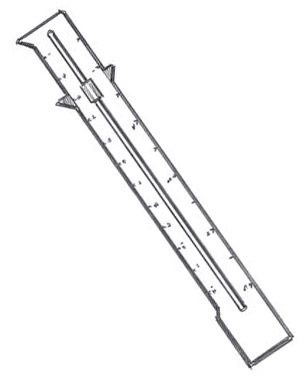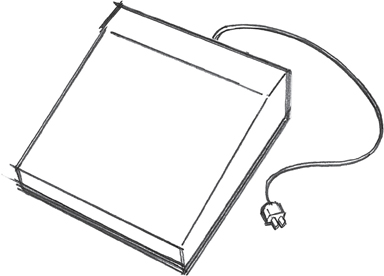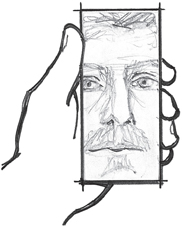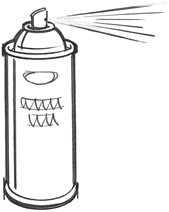Additional Drawing Tools
In addition to the basic supplies, there are other tools that will help make your drawing experience easier and more enjoyable.
Straightedge
Using a straightedge will give you sharp, accurate lines when your subject is technical and requires precision. The precision from a straightedge would look awkward in a sketchy drawing, though. If you want straightedge accuracy without the tightness, use the straightedge during the sketching stage with a light pencil line, then draw over those lines more heavily freehand in the drawing stage.
Triangle
Because it is larger than a ruler and has more surface area to grip, a triangle can be easy to use for drawing straight lines.
T-Square
Using a triangle with a T-square hooked to the side edge of your board or drawing pad will help you draw more precise vertical, horizontal and diagonal lines. This method is best used for drawing technical subjects such as buildings in linear perspective (see Understanding Linear Perspective).
Angle Ruler
An angle ruler works like a ruler, but it can pivot to measure angles and can fold small enough to fit in a pencil box. See Using an Angle Ruler for instructions on using this tool.
Dividers
Dividers are used to observe and duplicate proportions from a photo or sketch. See Using Standard Dividers for instructions on using standard dividers.
Proportional Dividers
Proportional dividers are used to proportionally enlarge or reduce a image. (See Using Proportional Dividers for additional instruction.)
Sewing Gauge
A sewing gauge is an inexpensive tool that can be used to measure the proportions of a still life, three-dimensional subject matter, or when working from flat reference materials such as photographs.
Small Mirror
Use a small mirror for self-portraits and for observing facial features. It is also handy for examining your artwork in reverse form. Looking at a drawing in reverse will allow you to see the composition through fresh eyes.
Fixative
Fixative is a spray applied to pencil drawings to prevent the artwork from smudging. It's used mostly for carbon or charcoal drawings, which tend to be powdery. For the demos in this book, fixative isn't necessary because you'll be drawing with graphite. Graphite is not likely to smear if the drawings are stored loosely, one on top of the other.
Must-Have Materials
- 4H, HB and 4B graphite pencils
- Pencil sharpener
- Sketch pad
- 11″ × 14″ (28cm × 26cm) medium-tooth drawing paper
- Drawing board
- Kneaded eraser
- White vinyl eraser
Optional, But Not to Be Overlooked
- Straightedge, triangle or angle ruler
- Light box
- Dividers, proportional dividers or sewing gauge
- Small mirror
- Erasing shield
- Pencil extender
- Craft knife
- Sandpaper pad
- T-square
- Fixative
- Tracing paper
- Masking tape
